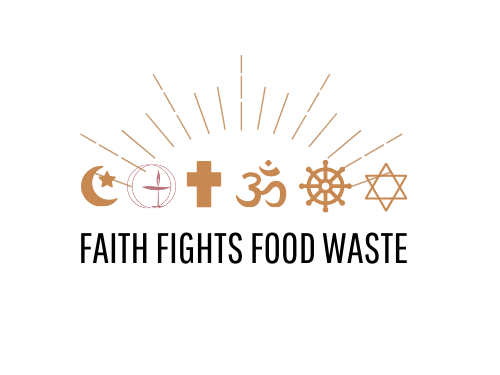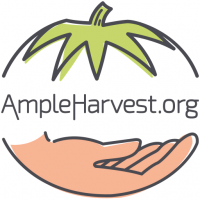Picture this: You’re up early on a weekend morning at your favorite grocery store, looking to get a jump start on your weekend. Virtually the only person in the store a few minutes after six AM, you head back to the meat department to get the main course for a special meal that night. You immediately notice a store employee pulling multiple packs of high-grade meat off the shelves – ribs, filets, steaks and ground beef – and tossing them into a rolling cart. With a sinking feeling, you ask “Are you throwing all of that out?” “Yes,” he replies, “It’s past its sell-by date.” Stunned, you ask, “Don’t you donate any of that?” “No, we don’t do that, we don’t want anyone suing us,” he answers.
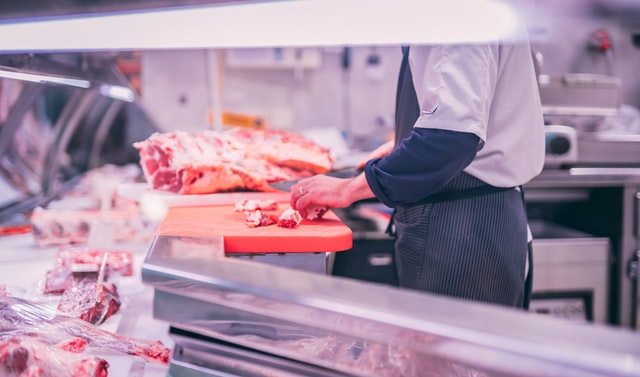
Sadly, that’s a fairly typical mindset in retail food stores across the U.S, where litigation fears (and the law) often trump common sense and help sway our collective moral compass. But look deeper. Watch employees at your go-to food retailer continually removing fruits and vegetables from displays in an effort to follow store policy which showcases only the most pristine items. Note how baked goods and prepared foods are robotically discarded on time schedules so that only the freshest items are available for purchase. Take a walk outside to the back of the store and note the multitude of rolling garbage bins. Look inside, and you’re likely to see a plethora of food items – bread, fruits, vegetables, meats – many of which are perfectly good to eat and high in nutrition content – awaiting transfer to a landfill. There they will rot away, polluting the environment rather than serving their intended purpose of nourishing people.
The problem
Such is the situation in America today, where far too much of our food supply is squandered. In fact, more than 130 billion pounds of food (or 31% of the available food supply at the retail and consumer levels) with a value in excess of $160 billion was uneaten in 2010. The Environmental Protection Agency estimates that more food (over 70 billion pounds) in municipal solid waste reaches landfills than any other single material in our everyday trash, constituting 24 percent of municipal solid waste in landfills.iii Such gargantuan figures can be hard to fathom, but author and expert Jonathan Bloom made them more tangible for many in noting that we waste enough food in the U.S. to fill the Rose Bowl every day. iv Notably, the USDA figure does not include Cisco Systems’ 2016 estimate of 11 billion pounds of excess food grown, but never consumed, in America’s home and community gardens annually.v
Couple that wastage with the excessive levels of hunger in America, where nearly 50 million citizens (about 15% of the population, many of them children and seniors) live in poverty vi and our wasteful behavior appears irrational. In 2019, there were 35.2 million people or 10.5 percent of households who were food-insecure, meaning that at times during the year, these households were uncertain of having, or unable to acquire, enough food to meet the needs of all of their members.vii Add in multiple other negatives of food waste, including air and water pollution and the opportunity cost of wasted resource inputs, and it is clearly nonsensical. The fact that we continue to waste so much food has long been a conundrum; and it is high time that we transitioned from conundrum to clarity on the gravity of the food waste problem in order to advance meaningful, national efforts to put our food to responsible use. viii
A look back
But let’s back-up a step. A key to that effort involves restoring the degree to which we value food. History, and especially our grandparents, can teach us important lessons in that regard, born from necessity associated with resource scarcity. Periodicals from the War years were full of motivational advertisements developed by the government encouraging the responsible use of food. Food was described as a “weapon” and as “fighting strength” – a resource that would “win the War.” Individuals were encouraged to “lick the platter clean,” “share food,” “preserve food,” and “make food go all the way.” In a wartime environment such admonitions were clearly understood, and they were followed, shaping the values and behavior of that generation.
Today, however, those values are noticeably absent, replaced by a fixation with convenience and saving time that leads to excessive waste. We live in a throwaway economy where portions of items are used with the remainder immediately discarded, and food is no exception. Wasted food occurs everywhere in the U.S., at all stages of the food supply chain – from farm to distributor to retailer to our homes. Just two generations removed from the War years, we have quickly moved from a culture of responsibility regarding our food to a culture of abundance.
Why is that? A few key reasons stand out:
Abundance: Food is everywhere – in vast quantities, in overflowing displays, and in multiple packaging formats. It is available at all hours, and in great variety. It is not only abundant, it is beautiful – perfect in size, shape, and color – and we expect nothing less.

Emphasis on Freshness: It is also extremely fresh. This theme reverberates through the supply chain. Retailers want to be known as having the freshest items; continually culling fruits and vegetables with minor blemishes and discarding prepared foods beyond designated time windows. On the farm, produce deemed “too ripe” (i.e. with limited shelf life) will often simply be plowed under by growers. In our homes, consumer confusion over freshness date labels (best by, sell by, use by, best before, etc.) and a “when in doubt, throw it out” mentality fuels additional food discards.
Low Cost: Our food is relatively inexpensive, indeed considered “cheap” by most of the world — although that cheapness is artificial as many of the true costs involved in the production of our food (e.g. subsidies and environmental costs) are not borne by the producers.ix That perception has created a system in which consumers are quick to discard food nearing shelf-life dates for fear of sickness, while retailers act similarly due to fear of liability exposure and reputational risk. Such a mindset is easy because in much of the country trash is easy, and disposal to landfill is relatively inexpensive.
Lack of knowledge/connectivity: For decades, millions of home and community gardeners were blessed with excess produce, but lacked knowledge of both the great need for that food across the country and the local agencies where it could be taken and put to best use. Where donation connections were publicized, they tended to emphasize processed food in jars, cans, and boxes, and not fresh fruit and vegetables, for ease of storage and distribution. Similarly, larger farmers and growers often had excess produce on hand, but passed up the opportunity for donations due to lack of knowledge of, or lack of access to, relief agencies in need and/or effective gleaning teams to harvest the excess food. Concerns over operational disruption and/or liability fears further suppressed the incentive to donate. In short, these constraints reinforced the notion that produce was abundant, and easily discarded or plowed under.
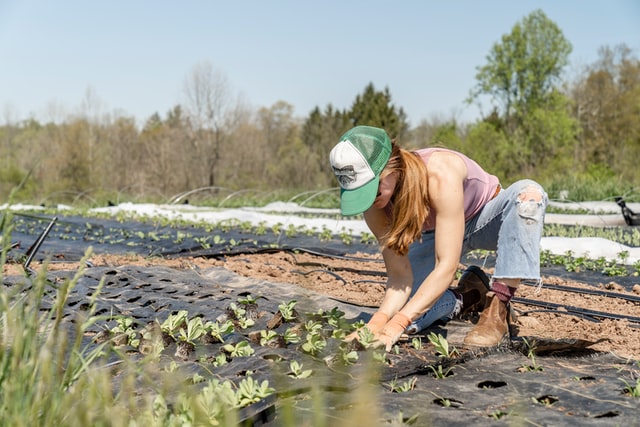
Not surprisingly, the combination of all of these themes – abundance, perfection, low cost, freshness premiums, consumer confusion, cheap disposal options, and lack of connectivity – has led to an alarming amount of wasted food which really shouldn’t be viewed as “waste” at all but instead as a valuable resource to be unlocked for the benefit of people and planet. Myriad factors related to production and distribution (including weather, pests, machinery damage, package damage, transportation delays, supply and demand variability, etc.) result in additional losses.x
We need to reset this situation, yet it’s particularly concerning to note that estimates of food waste have been on the rise.
We need to reset this situation, yet it’s particularly concerning to note that estimates of food waste have been on the rise. A 1977 government study estimated that 20% of the food produced for consumption in the U.S. was lost annually. A study twenty years later put that figure at 27%, while more recent estimates are in the gains over the same period. Further, a landmark report estimated that food waste and loss across the 30-40% range.xi Obviously a disconcerting trend when one considers the accompanying technologicalglobe could be as high as 50% annually.xii Such inefficiency is staggering. What business enterprise could survive with that level of waste?
The consequences of food waste are serious – socially, morally, environmentally, and financially.
The consequences of food waste are serious – socially, morally, environmentally, and financially. At the most basic level, by wasting food we miss the opportunity to feed people – our neighbors – and therefore miss the ability to spread goodwill and build community. Today, hunger is largely an issue of nutrition, and by discarding fruits, vegetables, dairy products and meat proteins, we deprive those in need of the high-quality calories that they need most for good health. With more than one-third of the adult U.S. population now obese, and the estimated annual medical costs of obesity at roughly $150 billionxiii, the potential to improve nutritional intake for people experiencing nutrient deficiency by redirecting excess high-quality food to relief agencies is enormous. In fact, wasted fruit can be viewed as “the low-hanging fruit” in this arena.
Wasted food also significantly harms the environment. Food that decomposes in landfills creates methane gas, which the U.S. Environmental Protection Agency (EPA) shows has more than twenty times the global warming impact of carbon dioxide. xiv Wasted food also consumes limited landfill space and leads to water pollution through run-off.
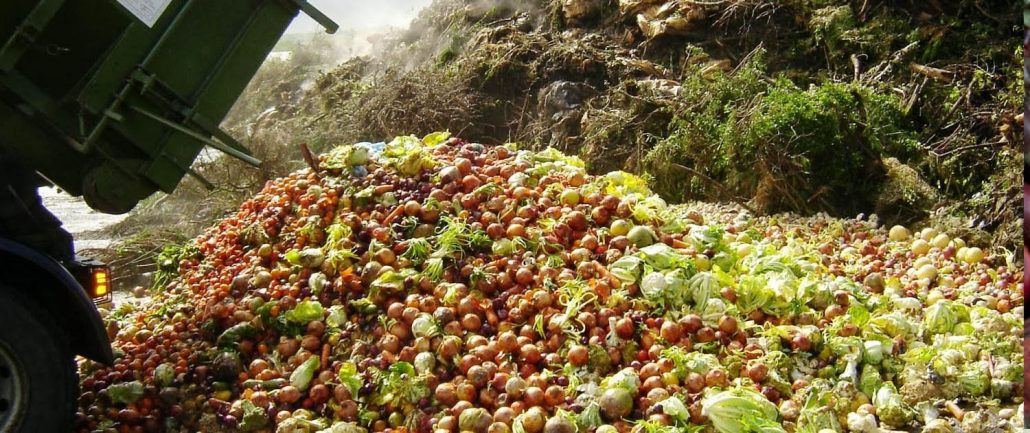
Notably, wasted food involves the waste of all of the resources that went into producing it in the first place – water, fertilizers and pesticides, fuel, and all of the associated human capital and labor. Together, the environmental harm and the wasted resource inputs associated with food waste carry great financial cost. Further, some reports note that the U.S. spends another $1 billion annually just to haul excess food away.
Hunger. Health. Environment. Economy. Food waste traverses all of these themes. As such, it is more than an issue of food security – it is an issue of national security. Reducing wasted food and redirecting those food assets to other positive uses is a challenge, but also an enormous opportunity – one that not only feeds people, improves health, benefits the environment, and saves money, but also one that has the potential to bring communities closer together. It’s an opportunity that we can ill afford to miss.
The solution
Embracing that opportunity involves mindset change such that our everyday decisions are guided by the desire to optimize our use of food – much as we do with any scarce resource. To get there, we need to first become more aware of the food waste problem, open our eyes to the amount of waste that is occurring, reexamine our values, educate ourselves and others on the consequences of that waste, and change our behavior while also raising our expectations of others (such as our favorite retailers and restaurants) in the food supply chain. This is not such a difficult transition if we all simply look a little harder at all of the waste that is occurring around us and consider the great potential in that food.

The EPA’s Food Recovery Hierarchy is a useful tool to guide this behavior shift – providing individuals and organizations with a tier of options for optimizing the use of potentially wasted food ranging from most preferred to least preferred. The hierarchy starts with source reduction (i.e. not producing food waste in the first place), and moves to feeding people, feeding animals, industrial uses, composting, and landfill. For backyard gardeners and farmers/growers of all sizes, feeding people is obviously the preferred goal once the food is produced. A commitment to follow the hierarchy, particularly by food sector organizations dealing in significant volumes of food, is a significant step toward minimizing waste and maximizing the value of food. Such an effort often results in financial savings, environmental benefit and positive press in the community along with inspired employees. A fine example is Campbell Soup’s Just Peachy salsa effort, in which the company partners with local peach producers and the Food Bank of South Jersey to produce jars of salsa from off-spec peaches that, while perfectly delicious, would not qualify for retail distribution and would otherwise go to waste.xv The Food Bank buys the peaches for a heavily discounted rate, giving the farmers an outlet and allowing them to earn some revenue from the peaches rather than paying to dispose of them. Campbell donates manufacturing and packaging costs, and its employees volunteer to help package the jars for distribution to retailers. Sale of the salsa generates income for the Food Bank to finance hunger-relief efforts, farmers save money, food is diverted from landfill, and Campbell gains standing in the community while also inspiring its employee base (helping to both attract and retain talent).
In the U.S., a significant percentage of annual food waste occurs at the retail level, where individual consumers have the opportunity to play a big role in driving food waste reduction. That shift starts with increased awareness of the gravity of the problem, which is getting a push from the Ad Council’s current “Save The Food” campaign along with an ever increasing supply of articles and media posts on the subject. Food waste is big news, as it should be, because it makes no sense. More formal educational efforts should be implemented to impact youth – our future legislators – on the consequences of food waste and the potential locked within excess food. Teaching our kids that wasting food is “not cool” will hasten the shift from a culture of abundance to a culture of responsibility.xvi Together, impactful awareness campaigns and education efforts should propel a reexamination of our values regarding food – returning us to the mindset of our grandparents where food was appropriately valued as the life- sustaining resource that it is. With newfound knowledge, consumers should be questioning not only their own behavior regarding food (and how not to waste it), but the behavior of producers, retailers, and restaurants as well. When consumers consistently reward responsible corporate behavior with their purchasing dollars, we can expect acceleration in the shift toward minimizing food waste.
Broadly, food waste is a simple issue to get behind. After all, who would argue that more food waste is a good thing? With rising awareness of the social and environmental benefits to reducing food waste, and the growth in technology-based solutions to facilitate redistribution of excess food, it is now much easier for the average individual to act responsibly regarding food. The real challenge is largely cultural – changing mindsets and values broadly and deeply enough such that minimizing food waste is the expectation among all of the players in the food system. And viewed in conjunction with pressing themes of hunger, health, environment, economy, community, and security, it’s clear that achieving that cultural shift is more than just an admirable goal.
Steven M. Finn, Lauren Goldberg, and Gary Oppenheimer, August 2019
Endnotes
i https://www.law.cornell.edu/uscode/text/42/1791 The Bill Emerson Good Samaritan Food Donation Act
ii Buzby, et al. The Estimated Amount, Value, and Calories of Postharvest Food Losses at the Retail and Consumer Levels in the United States. USDA Economic Information Bulletin Number 121. February 2014.
iv Bloom. American Wasteland. Da Capo Press. 2010.
v AmpleHarvest.org. Food Waste In America. 2016. Available at: http://ampleharvest.org/food-waste-in-america/
vi Feeding America. Hunger and Poverty Facts and Statistics. 2016. Available at: https://www.feedingamerica.org/research
vii Bloom and Finn. Food Waste: From Conundrum to Clarity. In Food Waste Across the Supply Chain: A U.S. Perspective on a Global Problem. Council for Agricultural Science and Technology. 2016.
viii Bloom and Finn. 2016.
ix Kantor, et al. Estimating and Addressing America’s Food Losses. Food Review. Jan-April, 1997.
x Finn. Valuing Our Food: Minimizing Waste and Optimizing Resources. Zygon –Journal of Religion & Science, December 2014, V. 49.
xi Fox, et al. Global Food: Waste Not, Want Not. Institution of Mechanical Engineers. November, 2013. xii Centers for Disease Control and Prevention. Adult Obesity Facts. 2016. Available at: https://www.cdc.gov/obesity/data/adult.html
xiii https://www.epa.gov/lmop/basic-information-about-landfill-gas
xiv Just Peachy Salsa Raises Funds For Hunger Relief. Available at: http://www.campbellsoupcompany.com/newsroom/news/2015/08/27/just-peachy-salsa-raises-funds- for-hunger-relief/
xv Bloom and Finn, 2016.
